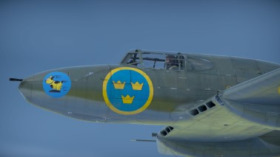
- For PC
- For MAC
- For Linux
- OS: Windows 10 (64 bit)
- Processor: Dual-Core 2.2 GHz
- Memory: 4GB
- Video Card: DirectX 11 level video card: AMD Radeon 77XX / NVIDIA GeForce GTX 660. The minimum supported resolution for the game is 720p.
- Network: Broadband Internet connection
- Hard Drive: 23.1 GB (Minimal client)
- OS: Windows 10/11 (64 bit)
- Processor: Intel Core i5 or Ryzen 5 3600 and better
- Memory: 16 GB and more
- Video Card: DirectX 11 level video card or higher and drivers: Nvidia GeForce 1060 and higher, Radeon RX 570 and higher
- Network: Broadband Internet connection
- Hard Drive: 75.9 GB (Full client)
- OS: Mac OS Big Sur 11.0 or newer
- Processor: Core i5, minimum 2.2GHz (Intel Xeon is not supported)
- Memory: 6 GB
- Video Card: Intel Iris Pro 5200 (Mac), or analog from AMD/Nvidia for Mac. Minimum supported resolution for the game is 720p with Metal support.
- Network: Broadband Internet connection
- Hard Drive: 22.1 GB (Minimal client)
- OS: Mac OS Big Sur 11.0 or newer
- Processor: Core i7 (Intel Xeon is not supported)
- Memory: 8 GB
- Video Card: Radeon Vega II or higher with Metal support.
- Network: Broadband Internet connection
- Hard Drive: 62.2 GB (Full client)
- OS: Most modern 64bit Linux distributions
- Processor: Dual-Core 2.4 GHz
- Memory: 4 GB
- Video Card: NVIDIA 660 with latest proprietary drivers (not older than 6 months) / similar AMD with latest proprietary drivers (not older than 6 months; the minimum supported resolution for the game is 720p) with Vulkan support.
- Network: Broadband Internet connection
- Hard Drive: 22.1 GB (Minimal client)
- OS: Ubuntu 20.04 64bit
- Processor: Intel Core i7
- Memory: 16 GB
- Video Card: NVIDIA 1060 with latest proprietary drivers (not older than 6 months) / similar AMD (Radeon RX 570) with latest proprietary drivers (not older than 6 months) with Vulkan support.
- Network: Broadband Internet connection
- Hard Drive: 62.2 GB (Full client)
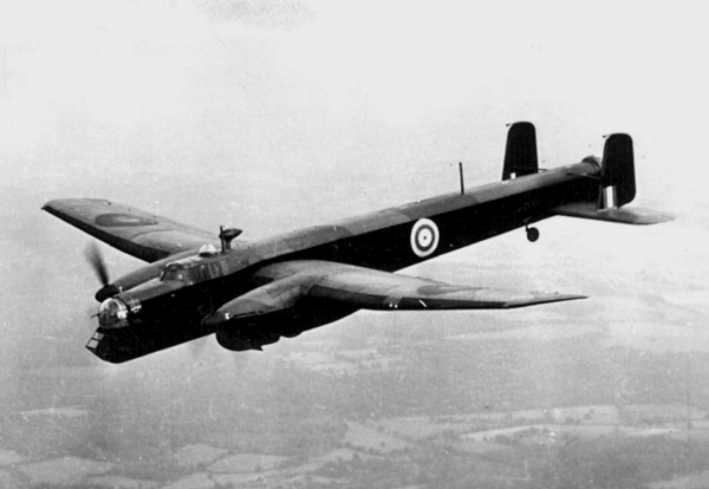
The Armstrong Whitworth Whitley bomber
From 7am GMT April 3rd to 7am GMT April 4th
-30% discount for purchase of Mosquito FB Mk VI, Lancaster Mk III
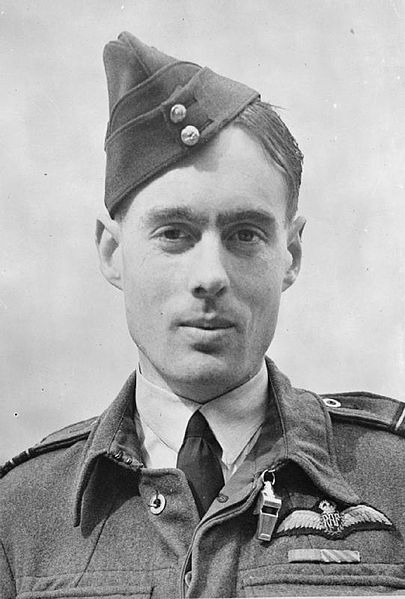 Born in Chester in the North West of England on September 7th 1917, Geoffrey Leonard Cheshire grew up in a relatively affluent family as the son of a successful lawyer and was later accepted at Oxford University to study Law. Remembered as a headstrong but friendly individual whilst at university, he also visited Germany in 1936 and whilst staying with a family in Potsdam he had the opportunity to witness a Nazi Rally where he caused offense by refusing to give the Nazi salute.
Born in Chester in the North West of England on September 7th 1917, Geoffrey Leonard Cheshire grew up in a relatively affluent family as the son of a successful lawyer and was later accepted at Oxford University to study Law. Remembered as a headstrong but friendly individual whilst at university, he also visited Germany in 1936 and whilst staying with a family in Potsdam he had the opportunity to witness a Nazi Rally where he caused offense by refusing to give the Nazi salute.
Deeply influenced by this visit and concerned that war was a very real prospect, Cheshire joined the Oxford University Air Squadron in 1937. Cheshire learned to fly on the Avro Tutor trainer; after graduating from university his legal career was cut short when he volunteered for service in the RAF following the outbreak of the Second World War.
His first operational tour was flying Armstrong Whitworth Whitleys with No.102 Squadron based out of RAF Driffield in Yorkshire. As a freshly qualified Pilot Officer, Cheshire joined his first crew in June 1940 as second pilot; as the Whitley was not fitted with dual flying controls, Cheshire’s duties included having a working knowledge of every crew position in the aircraft in case he was needed to take over in times of high work loads or following a crew casualty. At this stage of the war targets allocated to Bomber Command were of an industrial, infrastructure or logistical nature; factory complexes, dockyards, key bridges and railway networks.
As Cheshire’s experience continued to amass his First Pilot delegated more responsibility to him; he progressed from flying to and from the target to now being able to carry out the actual bombing runs themselves. Standing out from his peers as utterly dedicated to mastering his job, Cheshire would spend his days off flying the aircraft on training sorties, mastering Instrument Flying, and even wandering around the aircraft’s interior in the hangar, blindfolded so as to replicate the challenges which faced him as a night bomber.
Cheshire was made up to first pilot and given a crew of his own. After only a few missions, Cheshire’s Whitley was destroyed when a German raid against RAF Driffield succeeded in a direct hit on the hangar housing his aircraft. The night raids became so frequent that Cheshire soon found himself sleeping through them entirely.
 On the night of November 12th/13th 1940, Cheshire’s crew finally ran out of luck. Whilst on route to attack an oil refinery at Wesselring, the target was obscured by bad weather so Cheshire made the decision to attack the railway yards at Cologne instead. Shortly after seeing another Whitley diving towards the earth in flames, Cheshire’s bomber was hit almost simultaneously by two large AA shells. The explosions concussed the entire crew, blew a twenty foot long whole in the side of the fuselage and critically injured the Wireless Operator. Deafened, stunned and half blinded, Cheshire could only watch as the aircraft rolled over and plummeted 2000 feet and on fire, his hands refusing to listen to the commands from his brain due to the effects of the explosions. Finally, his senses still numbed, he managed to reach for the controls and level the aircraft out. A member of his crew staggered back groggily from the nose, a thick liquid dripping from his face and shoulders (Cheshire assumed it to be blood; he later found out it was oil). The intercom fizzled back into life; one crewmember was reporting being hit, another shouted that the entire rear of the aircraft was on fire. Flames now bisected the two ends of the fuselage, licking up to set one of the aircraft’s fuel tanks on fire. With his crew injured to various degrees and his bomber torn open and on fire, Cheshire turned to continue the bombing run. Shouting out orders to his crew to fight the fire and tend to the wounded Wireless Operator – who was on his first mission – Cheshire dragged the crippled bomber into a series of evasive turns as AA fire began to pound the sky around them. Fighting a wounded aircraft and managing a fearful crew, Cheshire dropped his bombs on target and returned safely to base. His was awarded the DSO for his actions.
On the night of November 12th/13th 1940, Cheshire’s crew finally ran out of luck. Whilst on route to attack an oil refinery at Wesselring, the target was obscured by bad weather so Cheshire made the decision to attack the railway yards at Cologne instead. Shortly after seeing another Whitley diving towards the earth in flames, Cheshire’s bomber was hit almost simultaneously by two large AA shells. The explosions concussed the entire crew, blew a twenty foot long whole in the side of the fuselage and critically injured the Wireless Operator. Deafened, stunned and half blinded, Cheshire could only watch as the aircraft rolled over and plummeted 2000 feet and on fire, his hands refusing to listen to the commands from his brain due to the effects of the explosions. Finally, his senses still numbed, he managed to reach for the controls and level the aircraft out. A member of his crew staggered back groggily from the nose, a thick liquid dripping from his face and shoulders (Cheshire assumed it to be blood; he later found out it was oil). The intercom fizzled back into life; one crewmember was reporting being hit, another shouted that the entire rear of the aircraft was on fire. Flames now bisected the two ends of the fuselage, licking up to set one of the aircraft’s fuel tanks on fire. With his crew injured to various degrees and his bomber torn open and on fire, Cheshire turned to continue the bombing run. Shouting out orders to his crew to fight the fire and tend to the wounded Wireless Operator – who was on his first mission – Cheshire dragged the crippled bomber into a series of evasive turns as AA fire began to pound the sky around them. Fighting a wounded aircraft and managing a fearful crew, Cheshire dropped his bombs on target and returned safely to base. His was awarded the DSO for his actions.
In January 1941 Cheshire completed his tour of operations. He immediately volunteered for a second tour, and was posted to No.35 Squadron at RAF Linton-On-Ouse to fly the new four engine Handley Page Halifax heavy bomber. After another successful tour of operations, during which he was promoted to Flight Lieutenant and employed as a Flight Commander, Cheshire was promoted again to Squadron Leader in 1942. Taking command of No.76 Squadron in August, again equipped with the Halifax, Cheshire did not select a regular crew of his own but instead chose to fly with inexperienced crews to try to help develop them professionally and build their confidence. Universally adored by his subordinates, Cheshire was fondly remembered as an approachable officer who led from the front and took the time to learn the name of every man and woman on the station, aircrew and ground crews alike. His ground crews proudly referred to themselves as the ‘Cheshire Cats.’
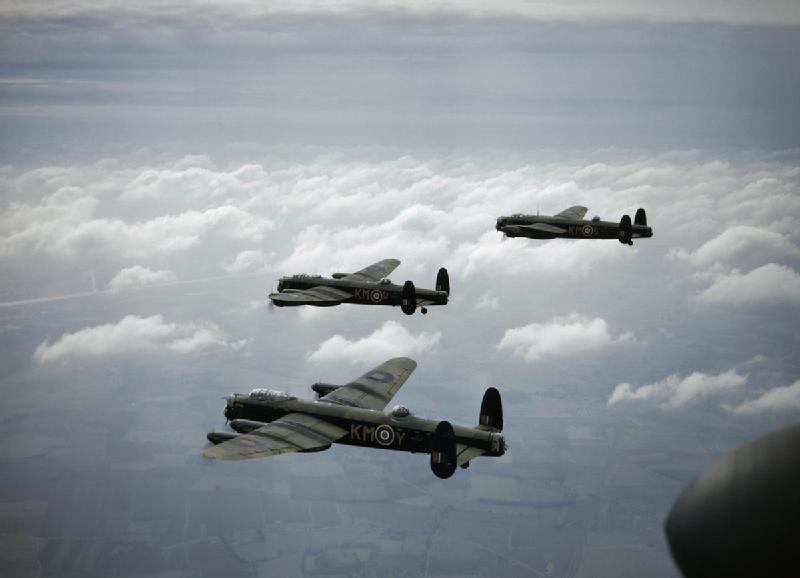 However, by this stage of the war RAF Bomber Command had changed tactics and now adopted the policy of ‘Area Bombing’ – the deliberate targeting of large cities in an attempt to terror bomb the civilian population into submission. Contrary to the strategic bombing of the early war which he had admitted to finding exciting, Cheshire was now morally opposed to Bomber Command’s policy.
However, by this stage of the war RAF Bomber Command had changed tactics and now adopted the policy of ‘Area Bombing’ – the deliberate targeting of large cities in an attempt to terror bomb the civilian population into submission. Contrary to the strategic bombing of the early war which he had admitted to finding exciting, Cheshire was now morally opposed to Bomber Command’s policy.
In 1943, aged only 26, Cheshire was promoted to Wing Commander. Even with the added pressures of command, Cheshire was keenly aware of the importance of flying currency and continued to attempt to fly every day. He was also unafraid to vocally support his men, even if it meant risking the wrath of his superiors. His dedication to his men extended to testing the Halifax in the air – he discovered that the aircraft had severe aerodynamic problems when flown on three engines, and his recommendations led to a modification of the rudders.
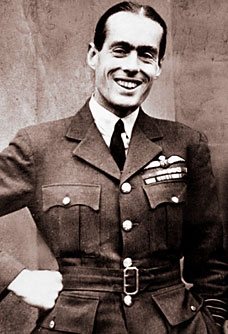 Yet another promotion followed to make him the youngest Group Captain in the RAF and station commander of RAF Marston Moor. However, desperate to fly operationally he accepted a demotion back to Wing Commander and took command of the legendary No.617 Squadron – the ‘Dam Busters.’ A strong advocate of commanding from the air alongside his crews, Cheshire took to flying a Mosquito (and on at least one sortie a P-51 Mustang, which he flew for the first time the afternoon before the raid) on some sorties to take charge of his Lancasters. Cheshire enjoyed his time with 617 as it took him away from Area Bombing and into the realms of precision bombing – developing new tactics for pinpoint accuracy against targets of military importance. In 1944 he was awarded the Victoria Cross for his outstanding courage and leadership across a variety of operations. He finished the war as a Group Captain with three DSOs and a DFC to accompany his VC. Completing over 100 operational sorties, Cheshire’s last operational flight was in August 1945 as the British observer to the atom bomb drop on Nagasaki. This, combined with his deep regret of Bomber Command’s Area Bombing, resulted in a huge change in direction. After leaving the RAF in 1946, Cheshire converted to Catholicism and dedicated the rest of his life to charity work for the disabled and conflict resolution. Leonard Cheshire passed away in 1992, aged 76, having suffered from motor neurone disease. It is especially fitting that in modern day Britain his name is now most recognised for Leonard Cheshire Disability – one of the largest charities in the United Kingdom.
Yet another promotion followed to make him the youngest Group Captain in the RAF and station commander of RAF Marston Moor. However, desperate to fly operationally he accepted a demotion back to Wing Commander and took command of the legendary No.617 Squadron – the ‘Dam Busters.’ A strong advocate of commanding from the air alongside his crews, Cheshire took to flying a Mosquito (and on at least one sortie a P-51 Mustang, which he flew for the first time the afternoon before the raid) on some sorties to take charge of his Lancasters. Cheshire enjoyed his time with 617 as it took him away from Area Bombing and into the realms of precision bombing – developing new tactics for pinpoint accuracy against targets of military importance. In 1944 he was awarded the Victoria Cross for his outstanding courage and leadership across a variety of operations. He finished the war as a Group Captain with three DSOs and a DFC to accompany his VC. Completing over 100 operational sorties, Cheshire’s last operational flight was in August 1945 as the British observer to the atom bomb drop on Nagasaki. This, combined with his deep regret of Bomber Command’s Area Bombing, resulted in a huge change in direction. After leaving the RAF in 1946, Cheshire converted to Catholicism and dedicated the rest of his life to charity work for the disabled and conflict resolution. Leonard Cheshire passed away in 1992, aged 76, having suffered from motor neurone disease. It is especially fitting that in modern day Britain his name is now most recognised for Leonard Cheshire Disability – one of the largest charities in the United Kingdom.
The author
 Mark Barber, War Thunder Historical Consultant
Mark Barber, War Thunder Historical Consultant
Mark Barber is a pilot in the British Royal Navy's Fleet Air Arm. His first book was published by Osprey Publishing in 2008; subsequently, he has written several more titles for Osprey and has also published articles for several magazines, including the UK's top selling aviation magazine 'FlyPast'. His main areas of interest are British Naval Aviation in the First and Second World Wars and RAF Fighter Command in the Second World War. He currently works with Gaijin Entertainment as a Historical Consultant, helping to run the Historical Section of the War Thunder forums and heading up the Ace of the Month series.
